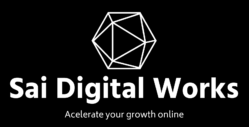IT and technical support are critical components for maintaining the smooth operation of technology systems and ensuring that users have the assistance they need when technical issues arise. Here’s a comprehensive overview of what IT and technical support typically involve:
1. IT Support
a. Help Desk and Support Services
- Incident Management: Handle and resolve technical issues reported by users, including software bugs, hardware malfunctions, and network problems.
- Service Requests: Process requests for new hardware, software installations, or access permissions.
- Technical Assistance: Provide guidance and troubleshooting for various IT-related issues, such as password resets, connectivity problems, and application errors.
b. Systems Administration
- Network Management: Monitor and maintain network infrastructure, including routers, switches, firewalls, and wireless access points.
- Server Management: Administer servers, including installation, configuration, and maintenance of operating systems and applications.
- User Account Management: Create, manage, and deactivate user accounts and permissions across systems and applications.
c. Software and Hardware Support
- Software Installation and Updates: Install, configure, and update software applications to ensure they are current and functioning properly.
- Hardware Maintenance: Troubleshoot and repair hardware issues, including desktops, laptops, printers, and peripherals.
- Patch Management: Apply security patches and updates to operating systems and applications to protect against vulnerabilities.
d. Data Backup and Recovery
- Backup Solutions: Implement and manage data backup solutions to ensure that critical information is regularly backed up.
- Disaster Recovery: Develop and test disaster recovery plans to ensure business continuity in the event of data loss or system failure.
e. Security Management
- Endpoint Protection: Deploy and manage antivirus, anti-malware, and other security tools to protect endpoints.
- Access Control: Implement and manage access controls to ensure that only authorized users can access sensitive information.
- Security Audits: Conduct regular security audits and assessments to identify and mitigate potential vulnerabilities.
f. IT Infrastructure Management
- Cloud Services: Manage cloud-based services and infrastructure, including cloud storage, computing resources, and applications.
- Virtualization: Implement and manage virtualization technologies to optimize resource usage and improve scalability.
g. Performance Monitoring
- System Monitoring: Use monitoring tools to track system performance, identify issues, and ensure that IT resources are functioning efficiently.
- Capacity Planning: Analyze usage patterns and plan for future capacity needs to avoid performance bottlenecks.
2. Technical Support
a. End-User Support
- Technical Troubleshooting: Assist users with resolving technical problems they encounter with hardware, software, or network connectivity.
- User Training: Provide training and support to help users effectively utilize technology tools and systems.
b. Application Support
- Application Management: Support the deployment, configuration, and maintenance of business applications.
- Bug Reporting and Fixes: Identify and report software bugs and work with development teams to implement fixes and updates.
c. Support Channels
- Help Desk: Offer support through various channels, including phone, email, live chat, and ticketing systems.
- Self-Service Portals: Provide users with access to self-service portals for common issues, such as password resets and FAQ resources.
d. Technical Documentation
- Knowledge Base: Create and maintain a knowledge base with articles, guides, and solutions to common technical issues.
- User Manuals: Develop and update user manuals and documentation to assist users in understanding and using technology systems.
e. Remote Support
- Remote Access: Use remote desktop tools to troubleshoot and resolve issues without needing to be physically present.
- Remote Monitoring: Implement remote monitoring solutions to proactively identify and address potential issues before they impact users.
f. Service Level Agreements (SLAs)
- Response and Resolution Times: Define and adhere to response and resolution times for different types of support requests as outlined in SLAs.
- Performance Metrics: Monitor and report on performance metrics to ensure that support services meet agreed-upon standards.
g. Technical Training and Development
- Staff Training: Provide ongoing training and development for IT and support staff to keep their skills and knowledge current.
- User Education: Offer training sessions and resources to educate users on best practices and new technologies.
3. Integration and Coordination
a. Collaboration
- Cross-Department Coordination: Work closely with other departments to understand their IT needs and ensure that support aligns with business goals.
- Vendor Management: Manage relationships with external vendors and service providers to ensure the quality and reliability of third-party services.
b. Continuous Improvement
- Feedback and Analysis: Gather feedback from users and analyze support performance to identify areas for improvement.
- Process Optimization: Continuously review and optimize IT and support processes to enhance efficiency and effectiveness.
c. Compliance and Best Practices
- Regulatory Compliance: Ensure that IT and technical support practices comply with relevant regulations and industry standards.
- Best Practices: Implement best practices for IT management and support to maintain high standards of service quality.
